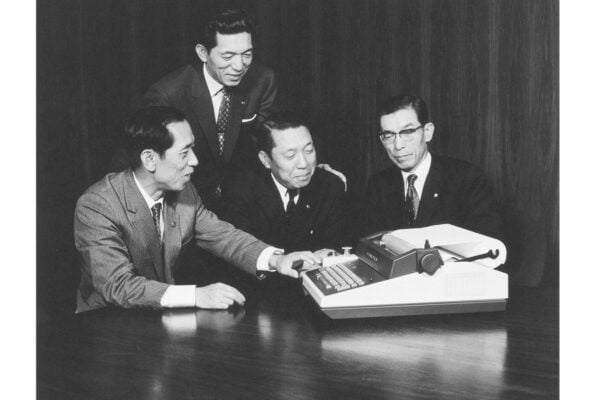Preparing for the first year of exams using new ClassWiz calculators

The past year has brought an exciting development at Casio: the introduction of our new ClassWiz range. We’ve updated the design, key layout and navigability of our scientific calculators to make them faster and easier to use.
As schools and students prepare for the first round of A-level and GCSE maths exams since the updated ClassWiz models were launched, we wanted to take a fresh look at these devices and what they’re capable of, with the help of mathematician and calculator expert, Simon May.
Navigating the transition
The recent introduction of the new ClassWiz range means that, for many schools, it’s currently a time of transition as far as calculator use is concerned. Some students will have already adopted the new models, while others may choose to stick with the handset they’re familiar with as they prepare for their exams.
Simon was keen to stress that students who choose to use a new ClassWiz scientific calculator – whether it’s the fx-83GT CW, fx-85GT CW or fx-991CW – should have little trouble getting used to it after just a couple of weeks’ effective use.
To start with, they will find that the functionality on the new handsets is largely the same as what they’re used to. The main difference is that some functions are now accessed by pressing the Catalog key and navigating the new menus, rather than looking for key labels on the front of the calculator.
Given most students’ inherent curiosity and familiarity with technology, exploring the device under their own steam to find out what it can do should come naturally to them.
“Students being students, they’ll just start pressing buttons until they find something,” Simon said. “They will navigate around the menu and, with some guidance from the teacher, quickly learn the menu options that equate to the key functions they’ve used before.”
New ClassWiz features and benefits
The updates to the ClassWiz range have provided some new features for users to explore, most notably the Function key.
One example of how this can really benefit students is when they’re working with or evaluating multi-term functions such as quadratics and cubics. On the fx-991CW, they can use the Function key to avoid entering an equation in full and simply input f(x), which reduces the risk of errors and stores the equation so it can be used in more than one calculation.

“This is a really nice improvement in functionality that makes life easier for students, makes their work less prone to error and also makes it faster,” Simon said.
Another significant addition is the Format key, which can perform different functions depending on the previous input. Pressing Format after entering an improper fraction, for instance, will bring up options to perform a conversion into a decimal or a mixed fraction.

However, when working with a different input – a whole number, for example – the Format menu will show a completely different range of functions, including prime factorisation.
“This is a powerful feature because what it can do changes, depending on what you’ve just calculated,” Simon explained. “This is brand new functionality, and it enhances the S↔D functionality on the old handset, providing a single key to change how a value is represented.”
A stepping stone to the fx-CG50
As well as gaining immediate benefits from the upgrades to the range, students who are looking to the future and thinking they might want to study A-level maths could see the new ClassWiz calculators as a step towards using the fx-CG50 graphic calculator.
Experimenting with the Function key on the fx-991CW, for example, could provide opportunities for students to start exploring calculus, which can lead the way to how they might work on the fx-CG50.

The ability to work with functions in terms of f(x) on the new ClassWiz calculators could also prefigure how students will go on to use the fx-CG50. This handset offers the option to refer to up to 20 graphically represented equations as Y1, Y2 and so on.
So having had their introduction to using the f(x) and g(x) features to recall and refer to functions on their ClassWiz handset, students can then go much deeper using the Y references on the fx-CG50.
On the subject of the graphic calculator, Simon was keen to point out that it’s completely acceptable – and often highly beneficial – for students to use this handset for GCSE studies.
“I think it’s an excellent option for GCSE, because it gives students the ability to solve equations, but also sketch them to gain a better understanding,” he said. Simon highlighted quadratics and reciprocals, such as 1/x or 1/2x.
as examples of functions that are much easier to understand when displayed graphically. The same can be said of simultaneous equations, which become easier to solve when students can graph the equation and look at where the lines cross.
Training and support is available
We’re committed to providing ongoing support and resources to help schools, teachers and students get maximum benefit from all of our calculators, scientific and graphic alike.
One of our ClassWiz experts will soon be hosting a series of GCSE revision webinars that will help to reinforce and improve calculator skills ahead of this year’s exams.
You can also find all sorts of help and information in the resources section of our website, including calculator manuals, how-to leaflets and videos.
If you’re interested in learning more about the fx-CG50, we offer free, expert-led training sessions that provide an introduction to the calculator and what it can do.
You can book a place here.



